March 5, 2012
Today, my breakfast was simple and tasty. I decided to have scrambles eggs with spinach and tomatoes. With coffee and healthy choice of bread with butter.
Here is a list of ingredients for my scrambled eggs:
- 2 eggs
- handful of spinach leaves
- 1 tomatoThen I had coffee with 2 table spoons of sugar and hot water
Also, I toasted a piece of bread and had a little bit of butter on it.
Here is an attempt to figure out how much oil has been used to deliver my breakfast to my plate.
EGGS:
In the process of production of the eggs, only chickens are required. However, it is important to consider that chickens needs seeds as their food source, which had to be grown in a field, and most likely fertilizer and pesticides were used, in which oil is used. Also, to maintain the field, machinery must have been used, which also need oil. Lastly, to maintain the building where the chicken live, the light is needed, and a lot of USA electricity is produces from non-“clean” sources, so oil or other form of fossil fuel was used.
The package is made from cardboard and was likely produced by a large company that produces for many companies. Companies like Zhytomyr Cardboard Factory. Yet the package does not state the origins and the production of the package.
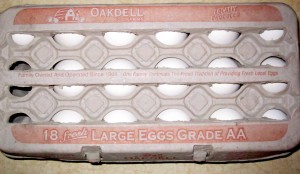
These eggs were bought at Winco Foods, WA, USA. (Address: 9900 19th Ave. SE, Everett, WA 98208). There are more than one farms that produce the eggs that could be delivered to Winco Foods. However, there are only 3 farms in the West, assuming the closest location (between Utah and California), I am guessing that the eggs came from a farm in California.
Considering than as average truck uses 7 miles to a gallon of gas, and the distance between the farm and the Winco Foods is 826 miles. The amount of gasoline that is used to deliver the eggs from the farm to the store is 118 gallons or 447 litres of gasoline. Of course we have to consider that the truck carries a large amount of eggs, not just my 2 I ate for breakfast, but for this exercise I will assume the full amount of gas used. In addition, the eggs were bought at Wincoand delivered to my house. The distance between Winco and my house is 181 km, and the car uses approximately 0.10 litres per km, then the amount of gas that is used is 18 litres. Similarly here, I am considering that the distance was covered for just eggs, but it is not that in reality.
SPINACH:
Spinach was bought in a local store, which is about 5-7 minutes away by foot. I did not use the car for this trip. However, spinach was produced and delivered from Ocean Mist Farms, located in Castroville, CA, USA, 95012. The distance from there to Tsawwassen, BC is 1027 miles. Assuming that a semi truck, with 7 miles per gallon of gasoline, delivered it there (which it wasn`t since there are distribution companies that pick up at a designated location and distribute it to the destination, so in my opinion, the distance is even larger, since there have to go from ports to ports and off the straight route) 3,888 litres of gasoline used.
Depending on the production whether it was in a green house or in the field will determine the use of the oil in its production. For instance, if the spinach was produced in a green house, then heat and light was used to subsidize the growth. That required electricity, which, as I mentioned before, does not come from strictly clean energy sources. However, even if spinach was grown on a field, then the oil was still used for powering the machineries to maintain the field. Also, chemicals were used to preserve the quality of spinach. Thus, oil was part f the production of the spinach. But, it is uncertain about the amounts.
TOMATOES:
The tomatoes do not have a sticker on them. So I have no idea where they came from. However, they were bought in the same local store, which I walked to. This I leave uncertain.
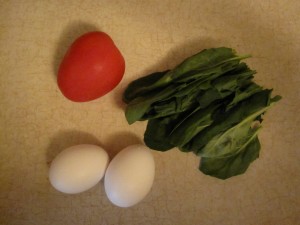
COFFEE:
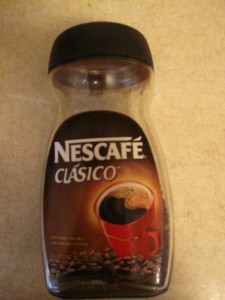
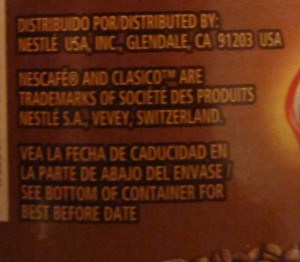
I am not certain where the coffee came from (so there is more uncertainty there) but it was distributed by “Nestle USA Inc, Glendale, 91203.” So from there, the distance is 1,260 miles and if it was distributed by trucks, then it 180 gallons or 681 litres of gasoline was used to deliver the coffee only from the distributor to Safe On Foods, Ladner, BC. However, on Nestle`s website they state that their coffee came from different countries like Vietnam, Thailand, China, Indonesia, the Philippines. Essentially, the coffee came from Asia, which is a FAR far away, then it was processes, which I am not sure where. It was also packaged in glass container, which had to be made and needed energy as well.
SUGAR
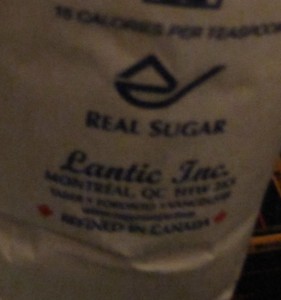
On the package it does not say where the sugar came from (more uncertainty), yet it seems like the main distributor is in Montreal, QC, and from there it is delivered to cities like Vancouver or Toronto. I cannot even guess if the sugar was transported by plane, truck or may be by train (likely). The official website does not state that information. Approximate distance from Montreal to Vancouver is 4,555 km.
The package is made from cardboard or paper, which also needed to be produced from trees, then processed into special paper, then into special usable bag and finally labeled. All of those required energy, and each of the steps probably took place in different factories, like saw mills, factories where such bags, or cardboard is made, and factories were labels were printed. Shipment from factory to factory or facility to facility is most likely LARGELY energy intensive.
BREAD:
As a part of my breakfast, I had a piece of toast. It is stated on the package that the bread was produced in Abbotsford, BC in Silver Hills Bakery. Te production required large amounts of electricity to power the stoves. There is no such information on the website, that states how much power they use to produce one loaf of bread, but i will assume it is insignificant, because majority of the electricity in BC comes from a “clean” source (hydroelectricity). The product is also organic, thus assuming that no oil was used for the growth of the produce that was used in the bread through chemicals like pesticides and fertilizers.
However, delivering from Abbotsford to Ladner, BC (Save On Foods) and then my house house in Tsawwassen, BC took approximately 34 km, which is 3 litres of gas (assuming that the distribution trucks are smaller than the semi trucks and use less gasoline, so i just assumed that i went in my car and delivered the bread from Abbotsford).
The bread is packaged in a plastic container. I would assume that the bag was produced somewhere locally and delivered to Abbotsford for the use. The package does now state where the plastic was produces, yet plastic contains oil, thus contributing to the oil use in the production of the packaging for he bread.
BUTTER:
I used a little bit of butter on my bread, which I bought at a local store, to which I walked. However, the butter was delivered from somewhere, yet it is not stated. Moreover, the products of butter include milk, which was delivered from a farm, where it was produced. Oil was used in that milk production. Food for the cows, which similarly as I mentioned earlier to produce food in the field need oil. Also, to maintain the cows in a barn, the electricity has been most likely used.
The packaging is plastic, and oil is contained in plastic.
Note for all of the products above: the labels that were printed on the packages also used oil, to power the machinery to produce labels.
What a journey, but this is how my breakfast looked when all of the product was produced, packaged and delivered, the breakfast was finally done and ready to be consumed.


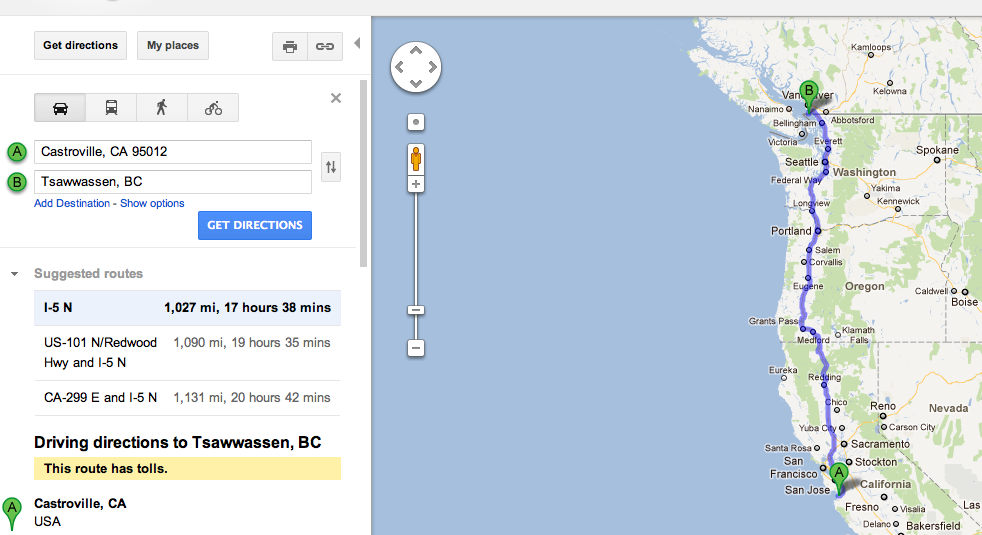
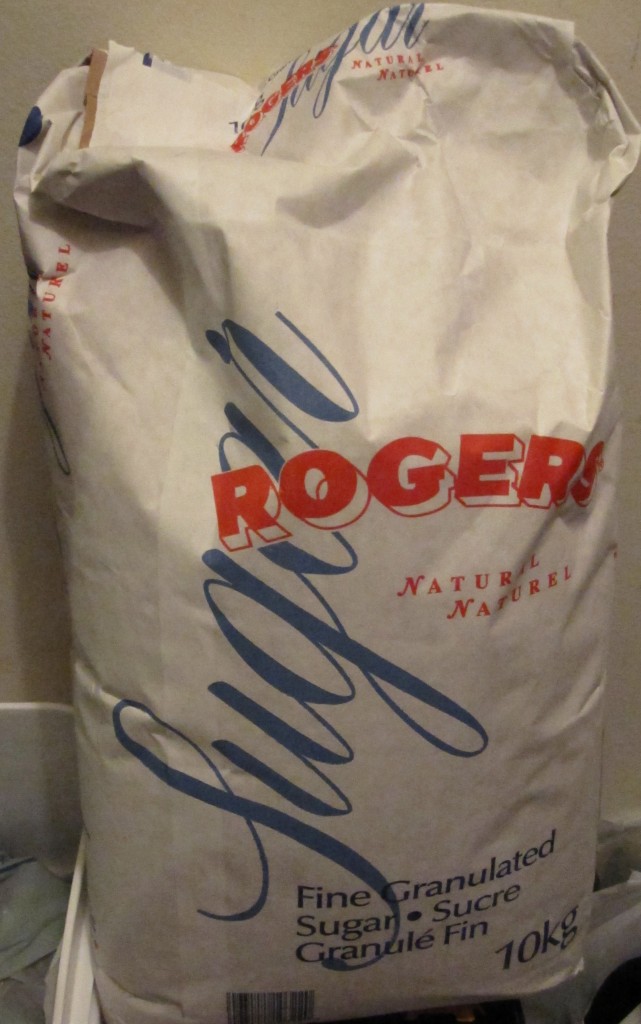
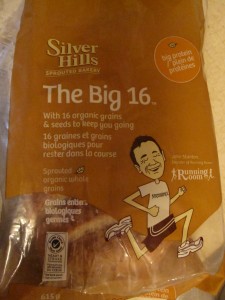
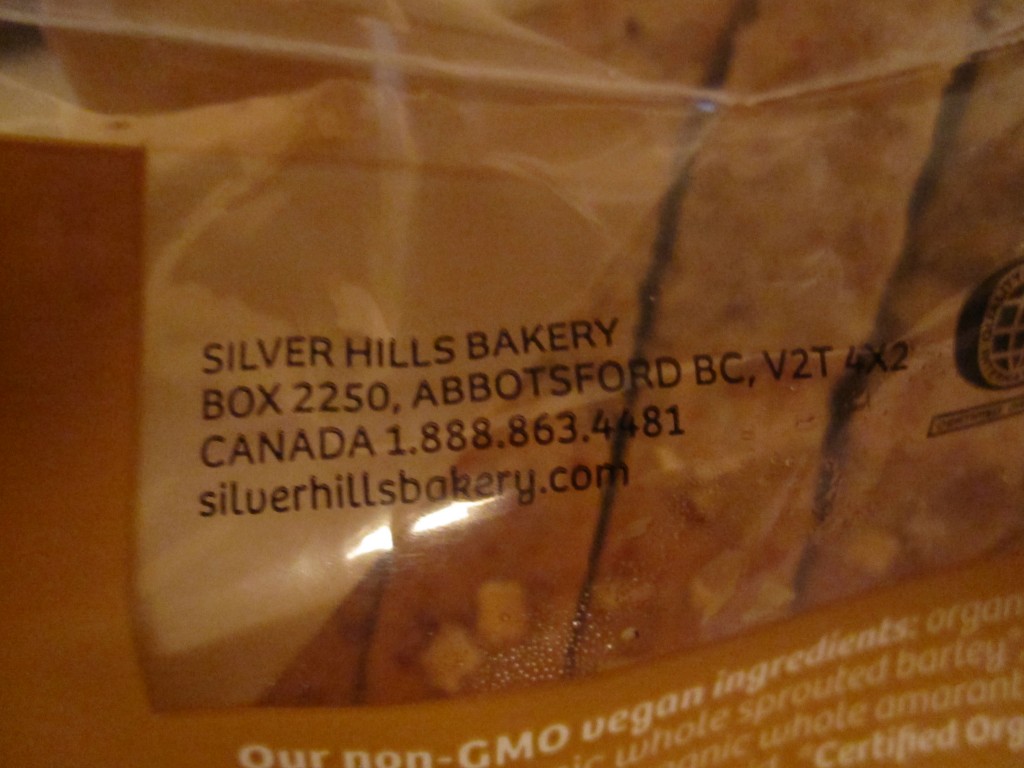
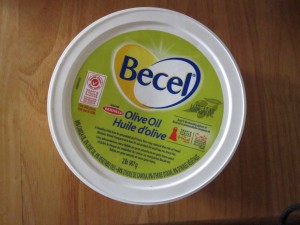
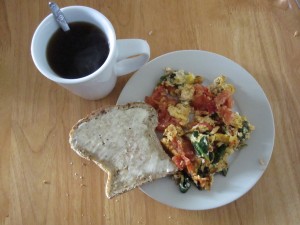
One response to “Breakfast”